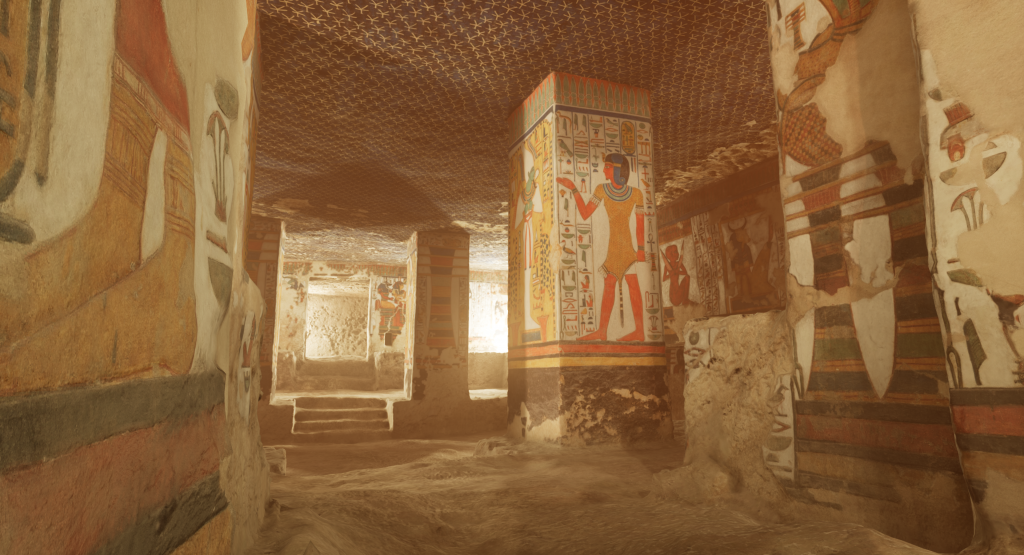
For any new technology, an evolutionary process occurs. Like the tadpole that eventually takes to land as a frog, tech is invented, brought to market, and with any luck, scaled. The companies that build these technologies go through similar changes. To discuss new edtech in 2018, therefore, doesn’t involve a quick scan down the list of patents filed. Our rundown of new edtech this year spans technology that has been in development for decades to that which has not yet been widely adopted or even brought to market in a viable way. Many of these products and services have hundreds of millions in venture capital backing them; others have been entirely bootstrapped by their developers.
AI and Automated Education
Edtech developers today using AI for some function in their products are a dime a dozen. While many tech leaders continue to warn about the coming wave of the fourth industrial revolution powered by AI-based automation, that era is still in its infancy, if not a long way off. Meanwhile, we’ve been programming software with machine learning for many years now.
Adaptive and machine learning algorithms already power educational software, often teaching more discursive subjects like math, languages, and literacy. Examples include Duolingo and the Chinese company LAIX’s Liulishuo. Both serve as language learning apps.
But a few have begun work that seeks to increasingly automate the teaching process. Some even have backing from the Chinese government. These deep learning AI solutions involve software that goes far beyond the measurement of and response to individual systems. These emerging solutions involve many layers of student assessment. They also promise to one day replicate the ideal teaching scenario—which would be 1:1 instruction—on a global scale.
A few companies have begun work on personalized learning systems. These include VIPKid, the Chinese online language tutoring giant, which already tracks student faces to determine the efficacy of their instructors. Part of the $500 million Series E funding they secured this summer will go to further developing AI, with the aim of potentially replace instructors altogether.
But difficulties remain. Face-tracking technology is hardly perfect. Beyond that, many still doubt that an algorithm can effectively teach a student without the supervision of a human instructor. Doing so requires knowing in advance the path down which learners will progress.
Virtual Environments
It’s been a few years now since VR and AR technologies have entered classrooms. A quick search of #edtech on Twitter will leave anyone inundated with images of primary and secondary school learners donning headsets to visit historical sites, distant regions, and even animated environments.
In most of these examples, the viewer remains tethered to the super-wide angle 360º camera that captured the environment. This summer, however, eLearning Inside got in touch with a small New Zealand based team that is pushing the limit of virtual environments. When Reality Virtual founder Simon Che de Boer’s house burned down, he was inspired to see if he could recreate it virtually.

“I thought, ‘Could I use my old family photographs of my place to recreate my old house so my daughter and I could go home?’” he said. “I didn’t know anything about virtual reality, I just knew how to put things together. So I spent many years working on a pipeline of how to do things. Along the way, I discovered photogrammetry. So when I was getting into it, photogrammetry was very new, no one was doing environments.”
Photogrammetry—capturing an image or site with hundreds if not thousands of photographs from numerous different angles—soon led Che de Boer to develop a system of virtual environment capturing and software that could allow any photographer to make incredibly high quality virtual environments. He and his team have scanned sites like Queen Nefertari’s tomb in Egypt and New Zealand’s Mana Beach and Wallace Homestead. The company is currently collecting old pictures of historic Christchurch, which was largely damaged and destroyed by a series of intense earthquakes in 2011, to recreate it.
Cengage Unlimited
While not strictly new tech, one of the world’s largest educational publishers, Cengage, made a big move this year. Instead of selling and renting individual titles—like virtually every other publisher—the company transitioned to a Netflix-style model where learners can pay a subscription to access their catalogue. Cengage Unlimited arrived at the heels of a college textbook market that has increased prices at a rate of four times that of inflation in the past decade.
“The industry was set up so that professors adopt and students pay,” said Cengage CEO Michael Hansen. “Because of that, the industry thought for the longest time they had tremendous pricing power. They could just price whatever, increase prices way above the [rising rate of] cost of living, etc.
“The industry tried discounting in a few different ways, discounting here, a little bit there, custom books there, but nobody really asked the fundamental, compelling questions, which is: Shouldn’t we just change this entire business model? And shouldn’t we give students what they need day one at an affordable price? And how can we do that? And without—obviously, we’re all for-profit businesses—wrecking the bottom line? We came to the conclusion for us given the position that we’re in and given all the work it took to get there, now is the time that we would finally change the business model.”
Cengage Unlimited went live in time for the 2018 fall semester. It remains to be seen whether the service will earn larger buy-in rates required to turn a profit. But fortune favors the brave, and along with emerging OER and other alternative textbook publishers, Cengage’s gamble marks the largest effort to disrupt the college textbook market to date.
GeoGebra AR
When Apple’s ARKit was announced in the summer of 2017, developers at GeoGebra were paying attention. This summer, the world’s largest and least commercial comprehensive math app debuted a new version. The app can replicate an object in AR and describe and manipulate the virtual object as a series of functions.
“From our perspective, mathematics is everything,” said GeoGebra COO and CFO Stephen Jull. “Every single thing around us is a function, or could be described as a function. That’s why we can put people in space with no one looking outside to steer the aircraft. It’s all about vectors and functions and mathematics, it’s really kind of beautiful.”
“The whole idea of augmented reality is exactly that. It’s an idea that everyone shares. Even people who aren’t that invested in math either as students or as adults, I think we all appreciate how it would be interesting to understand the engineering of something like a bridge. We’re all fascinated by great expanses of human engineering and our natural landscape.
“If you have an application that allows you to see that, then just a simple formula describes something like a cup on the table. It would be something like y^2 * x^2. You could see how that would be so compelling for a student who never really understood why a formula is important. If they could draw that and place it on the table (with the app) and show their parents at the breakfast table and say ‘That’s what I’m working on in math right now,’ it’s exciting for the student but it’s also exciting for the parents. Suddenly, it all comes together. Math is everywhere. And that’s where it became really fun and interesting for us.”
An Android version of the app is forthcoming.
Edtech for Developing Communities
While tech leaders so often say their products make the world a better place, edtech companies too infrequently target communities that need their products and services the most. 2018, however, included the launch, adoption, and advancement of numerous products for developing communities. These products included those that are data-light, extra sturdy and weather resistant, or able to run on shockingly little power.
The founders of dot Learn (CEO) Sam Battacharyya and (COO) Tunde Alawode initially set out to develop a Khan Academy-style video learning platform optimized for developing communities. Along they way, they discovered that numerous groups already had similar, more extensive libraries. But all, they realized, struggled to deliver their content to communities where the cost of data put them far out of reach.
They then pivoted to vector-based video compression. Today, their free service can reduce file sizes by 2-10 times without any loss in quality.
“The first wave of online education was never really designed for the way that most people actually connect to the Internet in the developing world, which is why most ed tech companies that operate in the developing world have focused on mobile and other things like that,” said Battacharyya. “Imagine a sixteen-year-old kid who has a cheap Android smartphone, who bought it from some street seller or one of those market stalls—that’s their primary source of connection to the Internet.”
Many other notable edtech solutions for developing countries emerged this year. TECHAiDE’s ASANKA acts as a hotspot device that runs off just one watt of power. Philanthropy University has developed a series of data-light education resources focused on capacity building in the global south.
Edtech and eLearning have come a long way, but the work of improving education is never finished. We’re excited to see what’s in store for 2019.
Featured Image: Yaoqi Lai, Unsplash.









[…] gig economy continue to upskill and re-skill to find sustained relevance. This need is also met by the deployment of AI-powered learning which makes it easier to pick up micro and macro skills. This only goes to underline Sheikh’s […]
[…] odd-job economy to continue to hone and develop to find lasting relevance. This need is also met by the deployment of AI-powered learning which facilitates the acquisition of micro and macro skills. This only underscores Sheikh’s […]
[…] economists to continue to train and master to find lasting relevance. This need is also covered implementation of AI-driven learning making it easier to acquire micro- and macro-skills. This only underscores Sheikh’s point […]
[…] gig economy continue to upskill and re-skill to find sustained relevance. This need is also met by the deployment of AI-powered learning which makes it easier to pick up micro and macro skills. This only goes to underline Sheikh’s […]
[…] system proceed to upskill and re-skill to search out sustained relevance. This want can be met by the deployment of AI-powered learning which makes it simpler to select up micro and macro expertise. This solely goes to underline […]
[…] gig economy continue to upskill and re-skill to find sustained relevance. This need is also met by the deployment of AI-powered learning which makes it easier to pick up micro and macro skills. This only goes to underline Sheikh’s […]
[…] gig economy continue to upskill and re-skill to find sustained relevance. This need is also met by the deployment of AI-powered learning which makes it easier to pick up micro and macro skills. This only goes to underline Sheikh’s […]